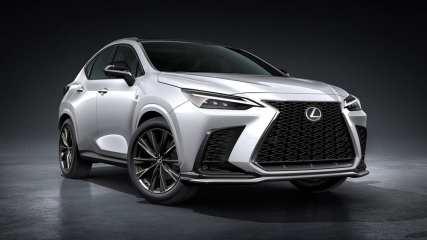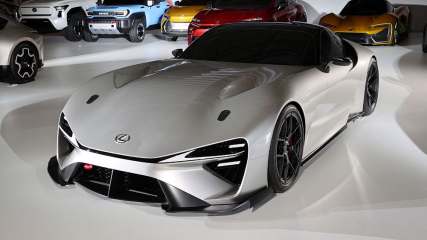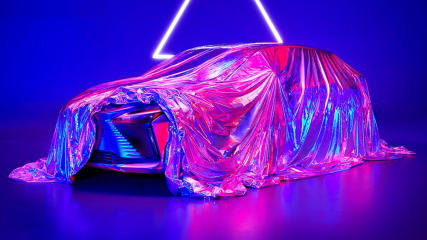2024 Lexus ES Reviews
You'll find all our 2024 Lexus ES reviews right here. 2024 Lexus ES prices range from for the ES to for the ES Es250 F Sport.
Our reviews offer detailed analysis of the ES's features, design, practicality, fuel consumption, engine and transmission, safety, ownership and what it's like to drive.
The most recent reviews sit up the top of the page, but if you're looking for an older model year or shopping for a used car, scroll down to find Lexus ES dating back as far as 1992.
Or, if you just want to read the latest news about the Lexus ES, you'll find it all here.
Lexus Reviews and News

Best 4WDs and off-road SUVs coming to Australia in 2022 - Ford Everest, Ineos Grenadier and more! - CarsGuide Podcast #214
Read the article
By CarsGuide team · 21 Jan 2022
Episode 214 - Best 4x4s coming in 2022!

Still waiting for your LC300? This hardcore Lexus LX600 Off Road wants to tempt you out of your LandCruiser
Read the article
By Andrew Chesterton · 13 Jan 2022
Stuck in the queue for a LC300?

So-called 'self-charging' hybrid cars: Everything you need to know
Read the article
By Stephen Corby · 28 Dec 2021
Much like the equally revered and reviled mullet haircut - business at the front, party at the back - a hybrid is a combination of two different elements that go together like Vegemite and toast. When talking cars, a hybrid is the combination of a traditional petrol or diesel-powered internal-combustion engine (ICE) with a battery-powered electric motor (or two) to drive the wheels, creating a middle-point between emissions-causing and emissions-free driving.These vehicles are often misconstrued and occasionally even advertised as 'self-charging', but be mindful these are very much just that middle-point, and will not charge their electric drivetrains without the intervention of the internal combustion drivetrain at some stage.The main benefit of a hybrid electric vehicle, in case you haven’t already guessed, is that it isn’t always using the ICE, which pleasingly cuts down both your fuel costs, and the carbon emissions that come out of your car’s tailpipe. If you’ve ever wondered “How does a hybrid car work?”, the answer is simple - although first, there are a few different types of hybrids that you need to know about. How a plug-in hybrid electric vehicle (PHEV) works is right there in the title: it needs to plug in to an external power source, like a wallbox charger or a domestic power socket, to charge its batteries, and is capable of driving in emissions-free EV mode (on average 50-60km, but this number can be higher or lower, depending on the size of the vehicle’s battery). There’s also what’s known as a “mild hybrid”. These have a starter-generator - an engine starter motor that also acts as an electricity generator - which is able to send energy back into the car’s battery. Although the ICE is constantly running in a mild hybrid, the electrical assistance it receives does help the car’s fuel economy (in a mild sense, of course).A standard hybrid, often known as a “series-parallel hybrid”, has a smaller battery, and it doesn’t need to plug-in to an external power source. It can typically operate at speeds of up to 40km/h, and distances of 2km, before the ICE kicks in.The battery in this type of hybrid could be seen as self-charging (see below), which typically happens via a process called “regenerative braking”. This is when kinetic energy is created as a car slows down, and that energy is harnessed and sent either directly to the electric motor that drives the wheels, or to the vehicle’s battery to be stored for future use. The ICE can also supply supplemental recharging of the battery by acting as a generator while either in motion or idling. As such, it is misleading to describe these vehicles as 'self-charging' given there is always a need for an internal combustion engine to facilitate charging of the electric drivetrain.Ever been on the road and noticed another car that seem to turn its engine off while idling at the lights, only to start back up again once it’s time to keep moving? This is because hybrids come with a stop/start function that switches the engine off when coasting slowly or when stopped, saving on fuel costs and cutting down on harmful emissions in the process. (Non-hybrids can also pull off this trick in more modern vehicles.)A common worry among drivers considering an electric vehicle (EV) is range anxiety, aka the fear the battery will run out of charge somewhere inconvenient before you’ve had a chance to recharge it. But by having an ICE to back-up the battery-powered electric motor in a hybrid, this has next to no chance of happening, as long as you’ve still got some petrol in the tank, of course (and it’s a lot easier to find a place to fill up with fuel).Electric motors produce maximum torque from zero revs, which means you get instant response and power from the throttle. The combination of ICE and electric motor means the petrol tank can be smaller and lighter, which also adds to a hybrid’s overall efficiency. Despite what impression your smug friends may be under, hybrid vehicles aren't the ultimate environmental solution. They are a big step in the right direction, but still require a lot of resources to build, and still emit some carbon and other harmful elements from their tailpipe.Hybrids are typically more expensive than equivalent ICE vehicles, but as more models enter the Australian market, prices will invariably drop, and price parity should be reached between hybrids and other EVs in the next few years. The battery packs used to power electric motors are on the heavy and large size, and they’re typically stashed in the lower rear of EVs. This can result in less luggage space in the boot, which isn’t an ideal result, especially if you have a family who like to travel as if they’re moving house every time they hop in the car. Battery packs in cars are typically guaranteed for around eight years, but the fact remains that they will degrade over time. This means that a battery pack will struggle to hold a charge more and more as the years progress, meaning more reliance on the ICE, which probably goes against why you bought a hybrid in the first place. Price: From $36,070, plus on-road costsPrice: From $35,490, plus on-road costsPrice: From $35,690, plus on-road costsPrice: From $39,990, plus on-road costsPrice: From $91,760, plus on-road costs
_0.jpg)
The best hybrid 4x4s in Australia
Read the article
By Stephen Corby · 25 Dec 2021
When most people think of off-road four-wheel drives (4WDs), they tend to picture beefy, petrol or diesel-guzzling beasts that only look legitimate when equipped with winches, caked with dried mud and decorated with a constellation of bugs.

Rust in pieces: From the last of the V8 Holden Commodore replacements to China's answer to the Toyota LandCruiser Prado, here are 11 cars removed from sale in 2021
Read the article
By Andrew Chesterton · 25 Dec 2021
A new year is always tinged in a tiny bit of sadness for us car peeps.
_0.png)
Toyota 2JZ engine: Everything you need to know
Read the article
By David Morley · 23 Dec 2021
Many engines have become legendary among enthusiast motorists, sometimes for their longevity, sometimes for their performance and sometimes even their character. In the case of Toyota’s 1JZ and 2JZ, all three of those boxes are unequivocally ticked.

2022 Lexus NX price and features detailed: New BMW X3, Audi Q5, Volvo XC60 and Mercedes-Benz GLC rival to arrive late with hybrid and turbo options
Read the article
By Justin Hilliard · 17 Dec 2021
Lexus Australia has confirmed pricing and specification details for the second-generation NX, with the mid-size SUV now due in local showrooms in January with the option of naturally aspirated, hybridised or turbocharged power

Lexus LFA reborn! Upcoming spiritual successor to iconic V10 supercar to use electric power to deliver ridiculous acceleration and driving range
Read the article
By Justin Hilliard · 15 Dec 2021
The V10-powered Lexus LFA of yesteryear is widely regarded as one of the greatest supercars of all time, and now Japan’s premium brand has finally confirmed a successor – albeit a spiritual one

Mitsubishi Mirage supply to continue into 2022 despite safety change, but stock of other affected models dwindling
Read the article
By Tim Nicholson · 06 Dec 2021
Mitsubishi will continue to sell its Mirage micro car for a while yet, despite the hatchback not complying with the Australian Design Rule (ADR) changes that came into effect on November 1.The Japanese carmaker looks like it is the only manufacturer affec

2023 Lexus RZ coming for BMW iX and Audi e-tron: New electric SUV teased ahead of reveal next year - but will it have 400kW and 600km of range?
Read the article
By Justin Hilliard · 03 Dec 2021
Lexus has given us a glimpse of its next all-new model, the all-electric RZ, which is expected to go tyre to tyre with a pair of zero-emissions large SUVs, the BMW iX and Audi e-tron




